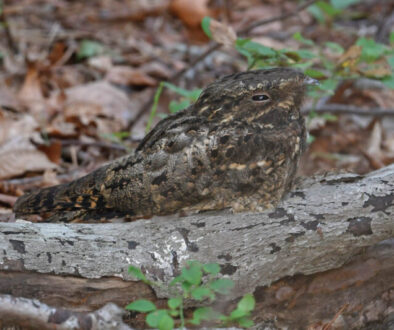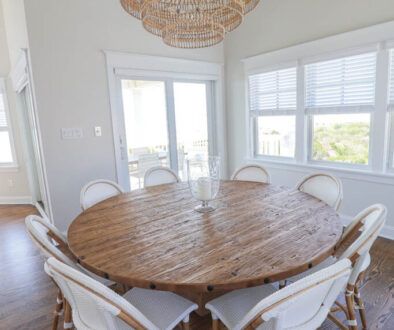101 S. Lafayette Street, Unit 1B
Photographs byMICHELLE GIORLA

Two main elements of the Cape May magic are breezes and views. Hence Cape May’s obsession with big porches where you can catch both if you’re lucky. And if you’re the kind that fancies after-dinner strolls, you’ll find breezes and views – beautiful views – at the corner of South Lafayette and Windsor Avenue. Stop and soak in the Cape May magic – it’s thick on that corner. The panoramic view includes the ocean as well some of Cape May’s best-known historic homes.
And from that corner, if you squint hard enough, you may be able to see into the past. Let the breezes brush your face with nostalgia.
Sitting on the northeast corner of this intersection is the Belvedere condominiums, consisting of seven condo units within an iconic structure constructed in 1871. And atop the structure sits a grand cupola, also known as a belvedere. Bel vedere is Italian for “beautiful view.”
“We bought our unit in 2018,” said Ashley Salmieri, who along with husband John owns unit 1B in the historic building. “My husband and I have been coming to Cape May for years – we actually got married here so it’s always been one of our favorite places to visit.”
By the 1850s, landowners in Cape May were realizing there was more money to be had hosting tourists than raising crops. So, Jonas Miller decided to subdivide the land around Congress Hall for summer cottage lots. An article by Philippa “Pip” Campbell appeared in the August 2013 edition of Cape May Magazine regarding the development of the land around Congress Hall in the late 1800s.


Pip describes how Miller created the lots by surveying streets north and west of Congress Hall. North Street and South Street (today South Lafayette Street) were laid out north of the hotel running east to west.
“Called Congress Hall Plantation, the earliest sales were advertised in an 1850 Nunan surveyor’s broadside,” wrote Pip. “Fifteen lots were sold during a July 1850 auction… The summer cottage industry was fueled by financial opportunity and poor living conditions in hotels.”
Pip referenced an article hinting that local hotels sometimes lacked good breezes, and by 1870, Pip writes that “cottages became preferred over hotel accommodations.”
“Not everyone could afford to own a cottage or even rent one for the entire season,” writes Pip. “So, groups of people combined resources and built small hotel-like cottages where subscribers had designated rooms.”
A 2008 historic survey describes the Belvedere as a “three-story, five bay, vernacular Italianate-style house. It was designed by Stephen Decatur Button and built by local contractors Henry Hand and J.G. Ware in 1870-1871.”
Stephen Button is a local celebrity in Cape May, having designed some of the city’s best-known structures, including “Jackson’s Clubhouse” on Columbia Ave, known today as the Mainstay Inn.


“The first Button-designed cottage was built in 1864 by Hand and Ware. Located on the northeast corner of Congress and South streets, the house was built for Philadelphian Joseph F. Page,” writes Pip.
The Belvedere was originally known as the Ferguson Cottage, named for Charles Ferguson.
“First a coal distributor, then a real estate developer, Ferguson built his Button cottage on lots 27 and 29, which he purchased from the Bockius estate in 1870. Like other Button houses the Ferguson cottage was built as a three-story, box shaped structure, with double porches on the front, a back addition for the kitchen, and a commanding cupola that remains today as part of the Belvedere Condominiums,” writes Pip.
I’ve stood on the corner of Windsor and South Lafayette, enjoying the breeze and the view – it’s one of my favorite places to linger in town. The 360-degree view includes some of Cape May’s most notable historic homes. It’s often quiet there, but you can still sense the low hum of summer happening not far off. The breeze flows through and picks up the scent of nearby hydrangeas and privet. You can see the ocean too. Look closely and you might be able to see the ghosts of Cape Mayans past strolling the streets.
In his book Cape May Queen of the Seaside Resorts, George Thomas writes, “The Ferguson house was erected over the winter of 1870 – 1871 from plans by Stephen D. Button. The cupola, or belvedere, the broad proportions, and the symmetrical placement of the windows are all hallmarks of Button’s designs, as is the over-sailing porch, unsupported at the corner.”
Like many grand homes in Cape May, the structure soon became a multiple-unit dwelling. A 1909 Sanborn map describes the house as a “dwelling,” while the 1951 map labels it a “rooming house.” In the ‘80s the building went condo.


“When we first started coming, we would stay at Congress Hall in the winter and be the only ones here almost,” said Ashley. “But as the town became more year-round – there were more restaurants and things to do year-round. We always loved the town, and we decided it was time to buy. We love the location and that we can pretty much walk anywhere.”
According to the 2008 survey, “The building maintains a medium level of architectural integrity. It lost part of its character when the two-story porch on the east side elevation was reduced to one-story and the first floor was partially enclosed in front. Every effort should be made to retain its remaining original wood elements such as the 2/2 wood sash windows, oversailing porch with pendant at the corner, and dentil molding and brackets.”
“We just did a large renovation,” said Ashley. “We renovated when we first got the property and most recently, we just updated the bathroom, so everything is updated and refreshed.”
The unit is one bedroom, one bath. The hues and fabrics give it a sophisticated but beachy feel and the vibe flows nicely with the entire building. The Belvedere is a marvel of Cape May’s Victorian past and still it stands with its breezy porches and lovely views.
The 2008 historic survey describes the structure as “not one of Button’s most outstanding designs.” But the Belvedere, with thoughtful caretakers, good paint, and wide porches for breezes, stands stately on the corner soaking up the view. ■



